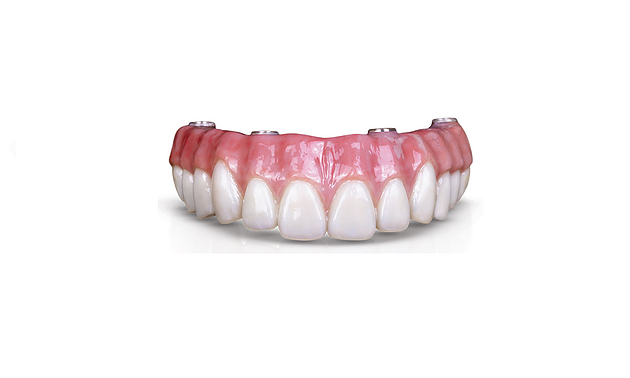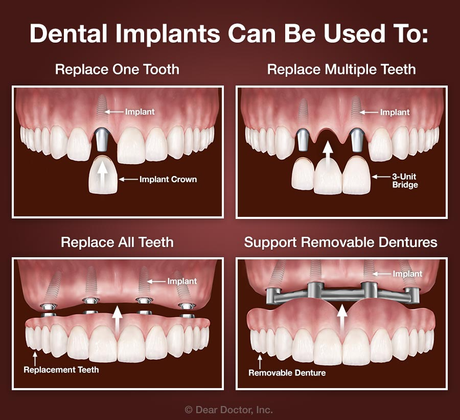The 2-Minute Rule for Dental Sense
Table of Contents3 Easy Facts About Dental Sense DescribedThe Best Guide To Dental SenseThe Greatest Guide To Dental Sense10 Simple Techniques For Dental Sense
are medical devices operatively implanted right into the jaw to recover a person's capacity to chew or their appearance. They supply assistance for artificial (fake) teeth, such as crowns, bridges, or dentures. When a tooth is shed as a result of injury or disease, a person can experience complications such as quick bone loss, malfunctioning speech, or changes to chewing patterns that lead to discomfort.Oral implant systems include a dental implant body and oral implant joint and may also include an abutment addiction screw. Wisdom tooth cavity. The dental implant body is operatively put in the jawbone in area of the tooth's root. The dental implant joint is usually affixed to the implant body by the abutment addiction screw and prolongs with gums into the mouth to sustain the attached fabricated teeth
(https://filesharingtalk.com/members/608667-dentalsense1)Structure of The Dental Implant System selecting dental implants, speak with your dental supplier about the prospective advantages and threats, and whether you are a prospect for the procedure. Points to take into consideration: Your total health is a vital factor in determining whether you are a good candidate for oral implants, for how long it will take to recover, and for how long the implant might stay in location.
Cigarette smoking might affect the healing procedure and lower the long-term success of the implant. The healing procedure for the dental implant body might take numerous months or longer, throughout which time you commonly have a momentary joint instead of the tooth. the oral implant treatment: Thoroughly adhere to the dental hygiene instructions offered to you by your dental service provider.
The 6-Second Trick For Dental Sense
Implant failure can result in the demand for one more procedure to take care of or change the dental implant system. Brings back the capability to chew Recovers aesthetic appearance Assists keep the jawbone from shrinking as a result of bone loss Protects the health and wellness of the surrounding bone and gum tissues Aids keep surrounding (nearby) teeth steady Boosts lifestyle Damages to surrounding all-natural teeth throughout dental implant placement Injury to the surrounding tissues throughout surgical procedure, such as sinus opening Injury during surgical treatment (for instance, fracture of bordering jawbone) Inadequate function, such as seeming like the teeth do not attack with each other typically A feeling that the tooth hangs or twisting in location arising from an abutment screw loosening up Implant body failing (looseness of the dental implant body) because of systemic infection, which might be more probable in people with unrestrained diabetics issues as a result of local infection in bone and periodontals supporting the dental implant body because of delayed recovery, which might be most likely in people who smoke Problem cleaning up the gum tissues around the implant, resulting in inadequate dental hygiene Without treatment periodontal condition Post-surgical feeling numb because of nerve impingement or damages Always inform healthcare service providers and imaging specialists that you have dental implants prior to any kind of magnetic vibration imaging (MRI) or x-ray treatments.
FDA is not familiar with any type of adverse events reported for MRI or x-ray treatments with dental implants. Dental implants systems are normally constructed from products that adhere to global agreement criteria of the International Company for Standardization (ISO) or ASTM International. These requirements have details of what makes a secure product.

A dental implant is a framework that replaces a missing out on tooth. With screw-like tools, the surgeon inserts a dental implant right into the jawbone, and it functions as a support for an artificial tooth, called a crown. A gadget called an abutment links the artificial tooth to the oral implant. The crown is customized to fit the individual's mouth and match the color of their teeth.
Get This Report on Dental Sense
Some people are not eligible for dental implant surgical procedure. It is for oral doctors to run on people with: intense illnessuncontrollable metabolic diseasebone or soft tissue disease or infectionIf these problems are settled, a person can have the surgical treatment. In, oral surgeons avoid operating individuals with: If individuals with any of the above go through oral implant surgery, there is a greater threat of the implant stopping working.

Dental dental implant surgery is a tailored procedure. It's not the same for every person. Yet the adhering to gives a general summary of what you can anticipate your dentist, dental doctor, periodontist or prosthodontist to do: Place the dental implant surgically. Give you time to heal. Affix the post and final crown, bridge or denture.
Next off, your specialist will thoroughly put the dental implant right into your jaw. If your implant is near the front of your mouth, your dental professional will make a short-lived tooth for you to put on until you heal.
The Basic Principles Of Dental Sense
Your provider can tell you what to anticipate in your circumstance. Throughout the healing stage, your jawbone should fuse to the dental implant. This process, called osseointegration, is essential for stability and long-lasting success. This procedure can take anywhere from three to nine months. In some instances, it may take longer.
Once your dental implant heals, your dentist can connect the joint (tiny connector click message) and your last restoration (crown, bridge or denture). This normally takes concerning one hour to finish and might require a second minor surgical treatment. You should not really feel any pain during your dental implant procedure due to the fact that your provider will utilize medicine to numb your periodontals.